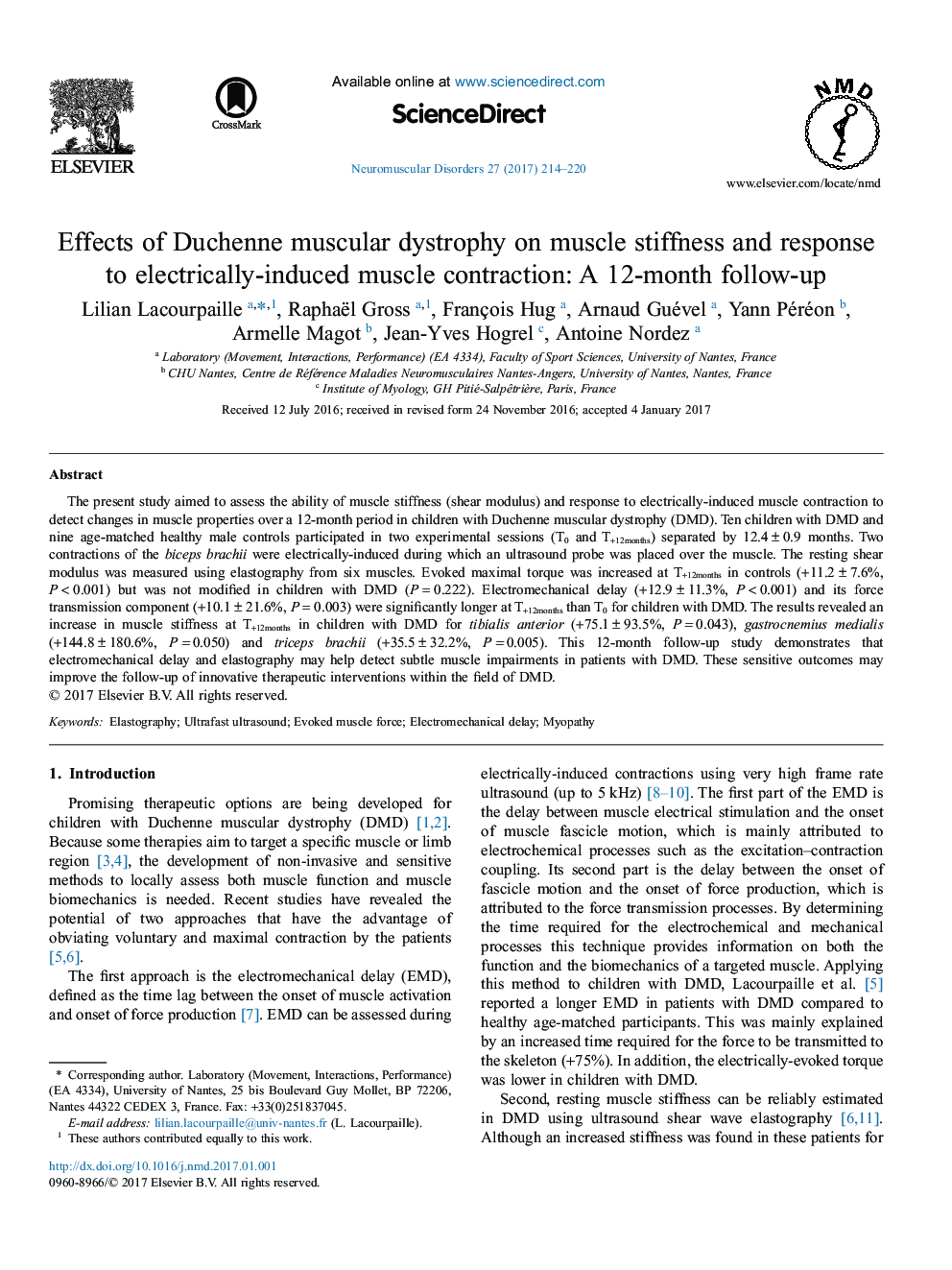| Article ID | Journal | Published Year | Pages | File Type |
|---|---|---|---|---|
| 5632064 | Neuromuscular Disorders | 2017 | 7 Pages |
â¢DMD patients exhibit a progressive impairment of muscle force transmission.â¢Electromechanical delay is sensitive to quantify degenerative effects of DMD.â¢Increase in muscle stiffness indicates tissue changes over 12 months in DMD.â¢Electromechanical delay and elastography may help detect muscle impairments for research purposes.
The present study aimed to assess the ability of muscle stiffness (shear modulus) and response to electrically-induced muscle contraction to detect changes in muscle properties over a 12-month period in children with Duchenne muscular dystrophy (DMD). Ten children with DMD and nine age-matched healthy male controls participated in two experimental sessions (T0 and T+12months) separated by 12.4â±â0.9 months. Two contractions of the biceps brachii were electrically-induced during which an ultrasound probe was placed over the muscle. The resting shear modulus was measured using elastography from six muscles. Evoked maximal torque was increased at T+12months in controls (+11.2â±â7.6%, Pâ<0.001) but was not modified in children with DMD (Pâ=â0.222). Electromechanical delay (+12.9â±â11.3%, Pâ<0.001) and its force transmission component (+10.1â±â21.6%, Pâ=â0.003) were significantly longer at T+12months than T0 for children with DMD. The results revealed an increase in muscle stiffness at T+12months in children with DMD for tibialis anterior (+75.1â±â93.5%, Pâ=â0.043), gastrocnemius medialis (+144.8â±â180.6%, Pâ=â0.050) and triceps brachii (+35.5â±â32.2%, Pâ=â0.005). This 12-month follow-up study demonstrates that electromechanical delay and elastography may help detect subtle muscle impairments in patients with DMD. These sensitive outcomes may improve the follow-up of innovative therapeutic interventions within the field of DMD.
